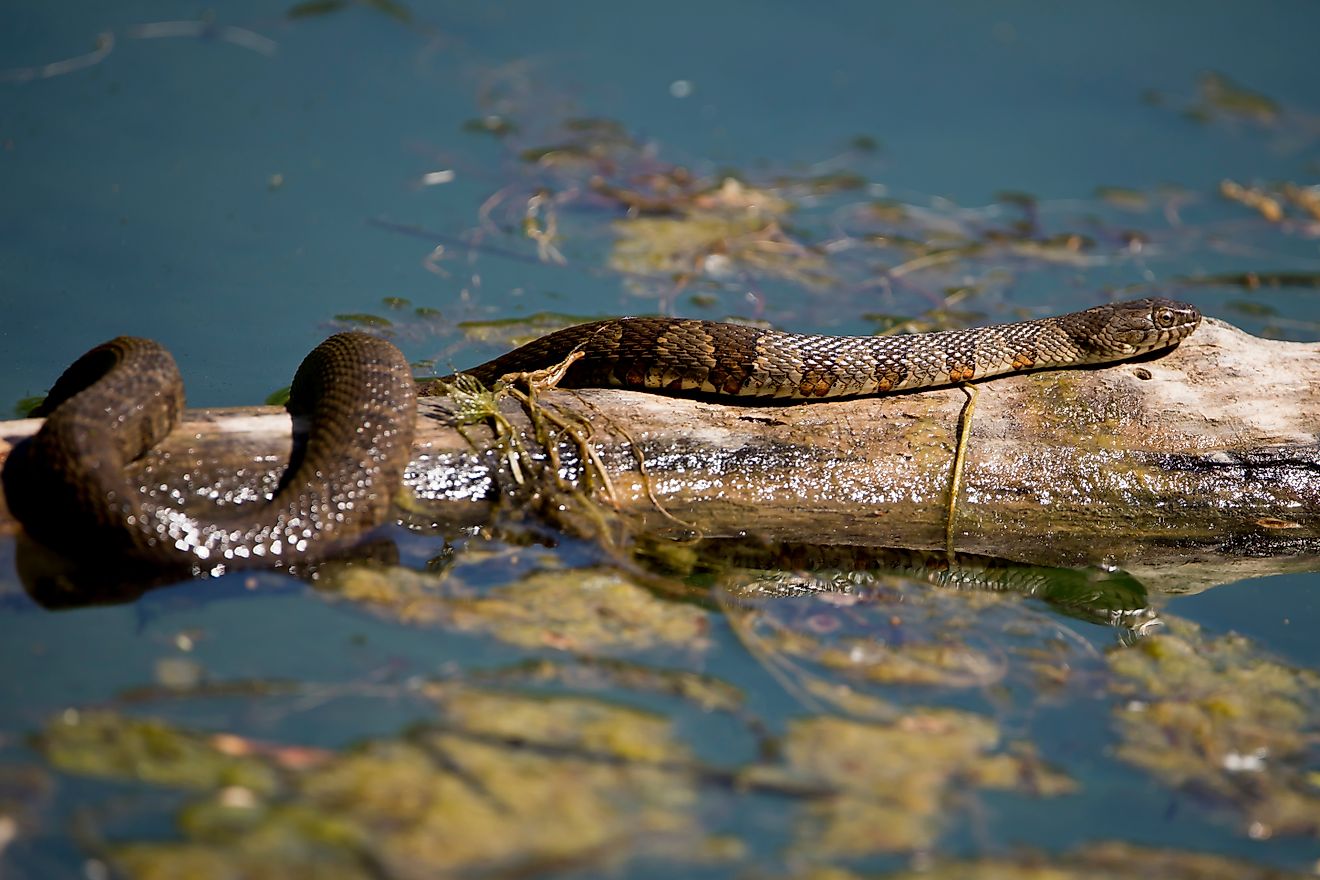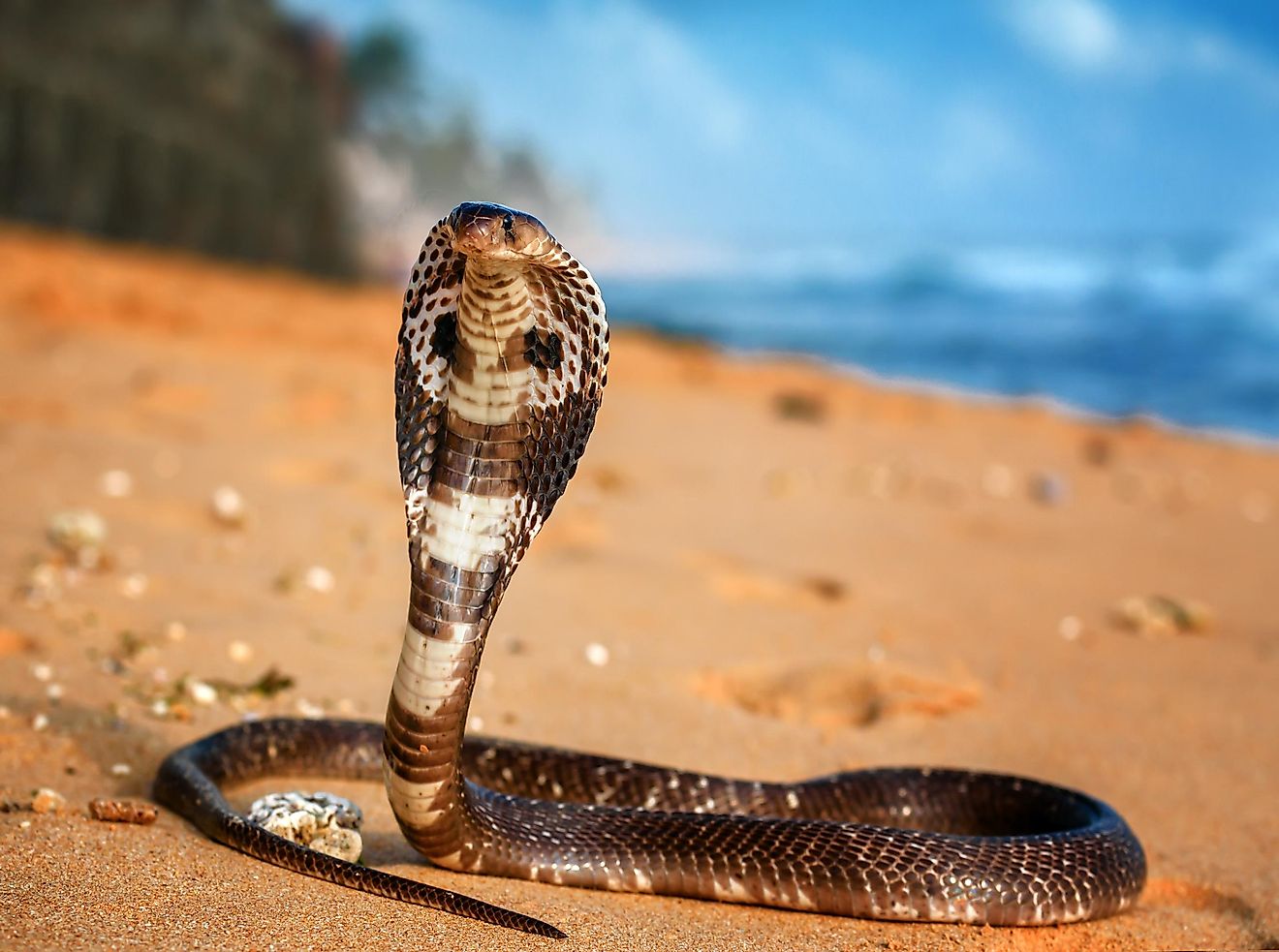
5 Most Dangerous Insects in Michigan
One of only two states in the United States without an official state insect (Iowa is the other state), Michigan is nevertheless home to several insects that can pose a danger to residents and visitors, either through bites, stings, or the transmission of diseases. Some insects, like blister beetles, are relatively rare but still worry gardeners. Other insects, such as mosquitoes and paper wasps, are a constantly annoying presence in the state. Understanding these insects and avoiding their habitats can help prevent encounters with the five most dangerous insects in Michigan.
Mosquitoes

Michigan is renowned for several defining features, like the birthplace of the automobile, Motown, and home to four out of the five Great Lakes: Huron, Michigan, Erie, and Superior. With all that water, the state is also the perfect breeding ground for mosquitoes laying their eggs in standing water. Globally, mosquitoes are one of the most deadly transmitters, carrying diseases like West Nile virus and Eastern Equine Encephalitis (EEE). In Michigan in 2024, there were 31 reported cases of West Nile virus in residents of the state, with three cities making “Orkin’s Top 50 Mosquitoes Cities List” for 2023: Detroit, Grand Rapids, and Flint. There were no reported cases of EEE in humans despite its transmission being most common around the Atlantic and Gulf Coast states and the Great Lakes region.
Most people who contract the West Nile virus do not display symptoms, but some can experience fevers, headaches, vomiting, and a rash. In rare instances (less than 1% of cases), the virus can trigger diseases like encephalitis or meningitis, which could have serious or fatal side effects. Prevention is the best way to avoid both the West Nile virus and EEE. One way to do this is to avoid areas where mosquitoes breed and wear a chemical-based repellent like DEET.
Kissing Bugs

Another dangerous insect is the kissing bug, which transmits a relatively unknown disease called Chagas, which kills about 12,000 people worldwide a year. Kissing bugs are native to Latin American Countries. Still, due to the movement of people, the disease has been detected in 44 countries, including Canada and the United States, according to the World Health Organization (WHO). The Centers for Disease Control and Prevention (CDC) estimates that there are about 280,000 cases of Chagas in the US. Many people with the disease are unaware that they are infected, which can be transmitted by eating food that has been in contact with the poop of infected kissing bugs.
Kissing bugs are most active during the warmer months, particularly at night. To avoid bites, seal cracks, keep your home and backyard clean, and limit time outdoors at night during the summer months.
Chagas is curable with antiparasitic medicine in the early stages of the disease, whose symptoms include fever, enlarged lymph nodes, swelling, and abdominal or chest pain. In later stages, the disease targets the heart and digestive muscles and can lead to progressive heart failure over time or sudden death.
Paper Wasps

Paper wasps are among the most venomous insects found in Michigan. Not only a pesky presence at many BBQs, these stinging insects can be aggressive and deliver painful bites, especially when protecting their nests full of eggs. The eponymous wasps are named after the grayish-brown nests that look like paper, which they build using their saliva to scrape the wood fiber from building materials and hang under eavestroughs and gutters around homes.
Like bees, wasps do not leave a stinger behind, so they can repeatedly sting their victims. The symptoms of a paper wasp sting include pain around the sting site, redness, and swelling. For the majority of people stung by a paper wasp, it is not serious. However, some people may have a more serious reaction, resulting in increased swelling and pain, which can progressively worsen. Systemic reactions like anaphylaxis can range from mild to deadly and include systems like shortness of breath, dizziness, changes in heart rate, and nausea. These types of reactions require immediate medical attention.
To avoid stings, stay away from their nests, keep outdoor garbage sealed, and clean up food and drinks promptly after eating, especially in the late summer months.
Blister Beetles

While blister beetles are rare in Michigan, they are present in the state, especially on the foliage or flowers of many plant species and in vegetable gardens. They are native to the eastern United States and are 1 to 2.5 centimeters long. The beetles have large heads compared to their body size and can vary widely in color, from bright yellow with black strips to dull grey. Named after its defense mechanism, the blister beetle secretes a toxic body fluid called cantharidin, which causes skin irritation and blisters upon contact. The blisters are painful but not life-threatening.
Ground blister beetles have been widely used in traditional medicine in China for over 2,000 years to treat warts. The beetles generated interest in the 1800s when it was discovered that the toxin cantharidin (also known as Spanish fly) was purported to be an aphrodisiac. In the US, topical cantharidin was used to treat warts until the FDA revoked its approval in 1962. Despite anything to the contrary, eating the beetles can be fatal, and licking them isn’t recommended either. Gardeners should avoid contact with the beetles and wash their skin immediately if exposed.
Fire Ants

Like other stinging insects, fire ants bite and sting when disturbed or threatened. Originally from South America, fire ants were introduced to the US in the early 20th century. In Michigan, ants can be found in forests, grassy areas, and urban areas. The ants live in underground nests in various soil types, including sand and clay. Although there are three main species of fire ants in Michigan, the most common is the red imported fire ant (the other species in Michigan are the black imported fire ant and the southern fire ant). The insects are small, about one-eighth of an inch long at most, with a venom-filled stinger at the end of their abdomen.
The best way to avoid being stung by a fire ant is to avoid disturbing their nests by stepping on the telltale mounds or sitting on one. If you do get bitten by a fire ant, it injects venom into the skin, causing a burning sensation and intense pain. The area around the bite may become swollen, red, and itchy. In rare cases, people can have severe allergic reactions to fire ant bites, which can be life-threatening. However, ant-related deaths are rare, roughly five percent of fire ant bites at that, and those deaths are usually a result of anaphylactic shock.
Michigan is home to various insects that are dangerous to people and pets. Mosquitoes are a serious concern because they can transmit diseases like West Nile virus and Eastern Equine Encephalitis. Kissing bugs can be potentially life-threatening if not treated quickly. Venomous paper wasps, fire ants, and blister beetles pose additional threats through stings, bites, or toxic secretions. Understanding these insects’ behaviors and habitats and adopting prevention strategies are essential for staying safe from the five most dangerous insects in Michigan’s great outdoors.











